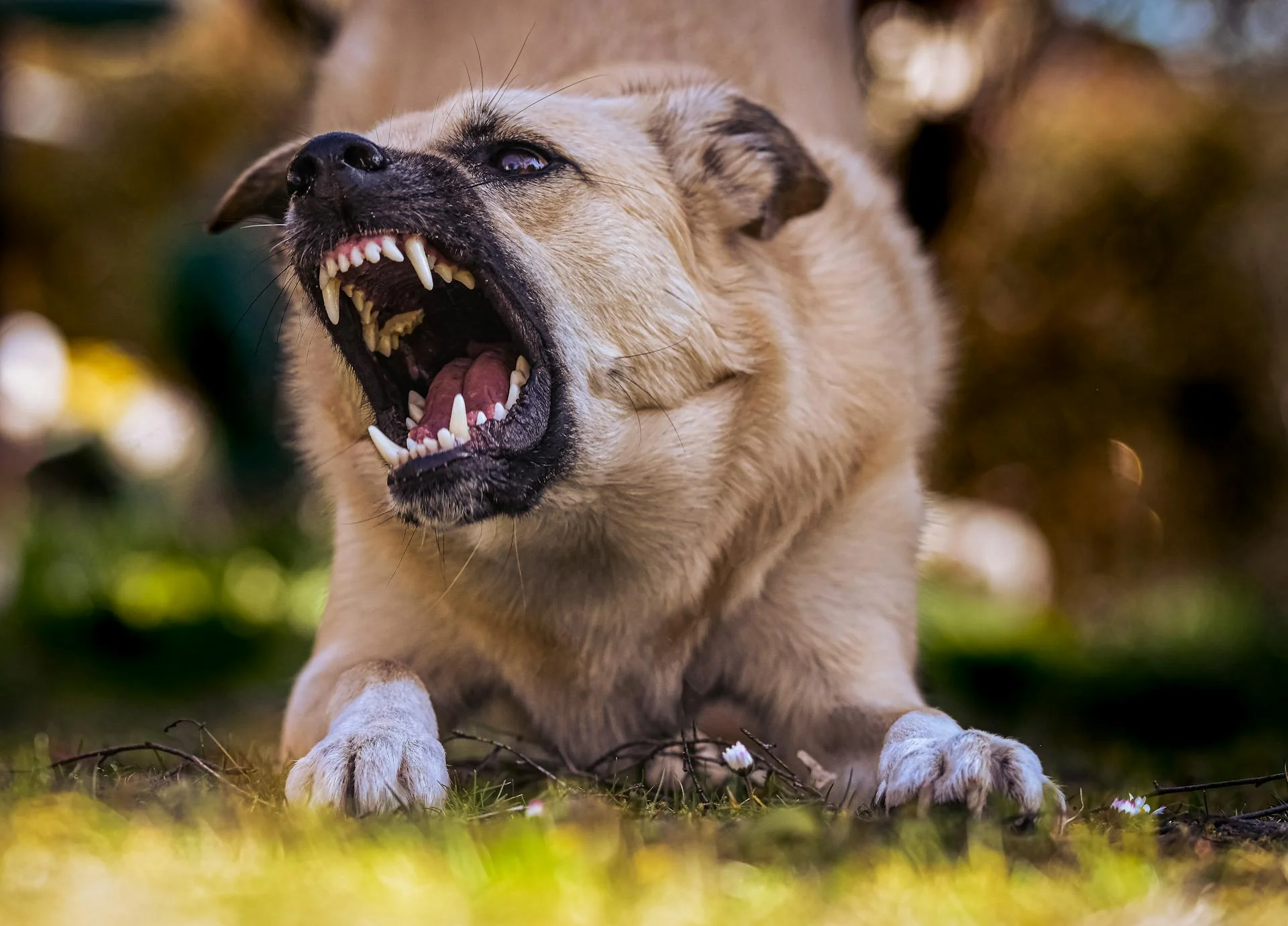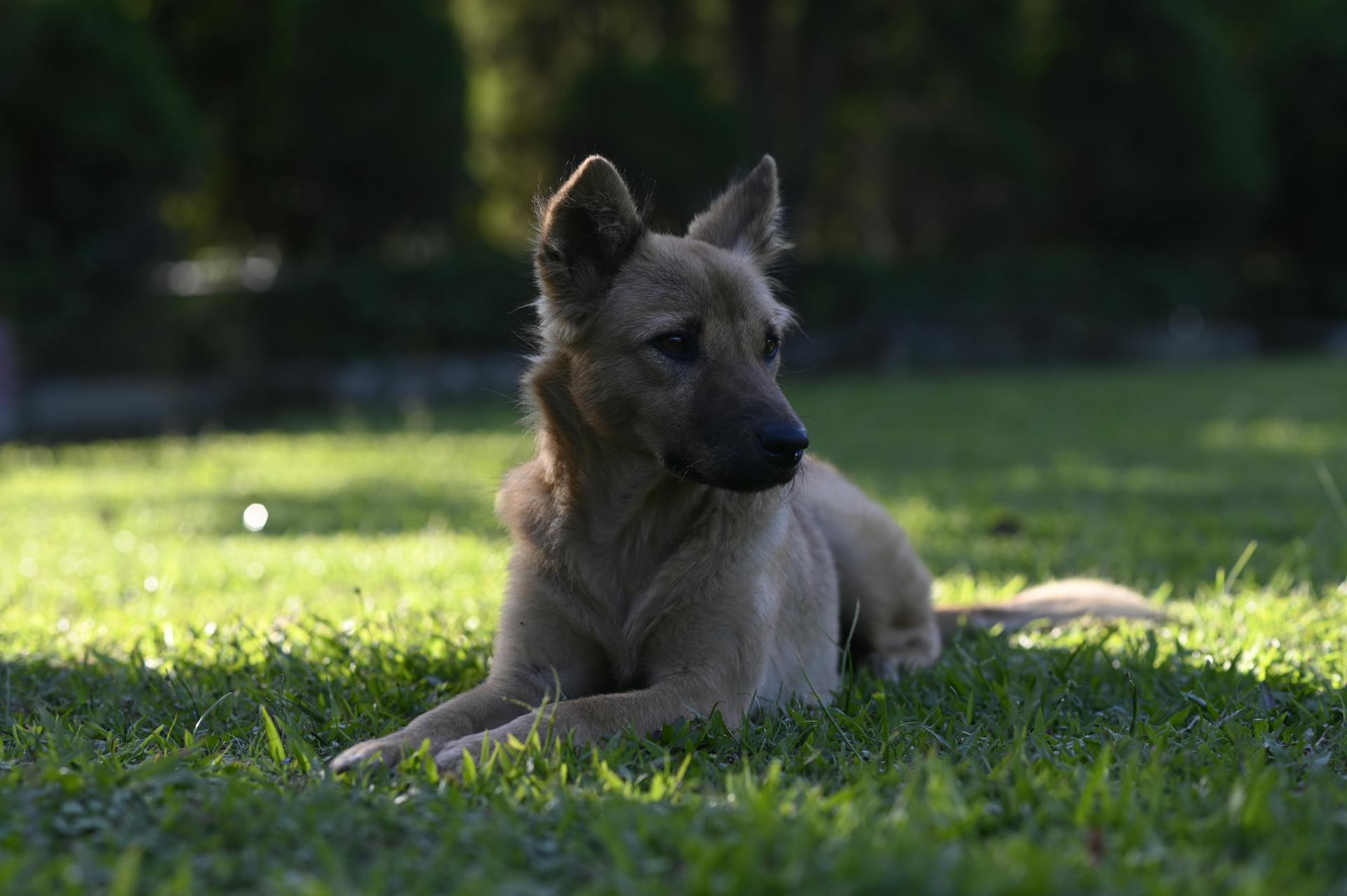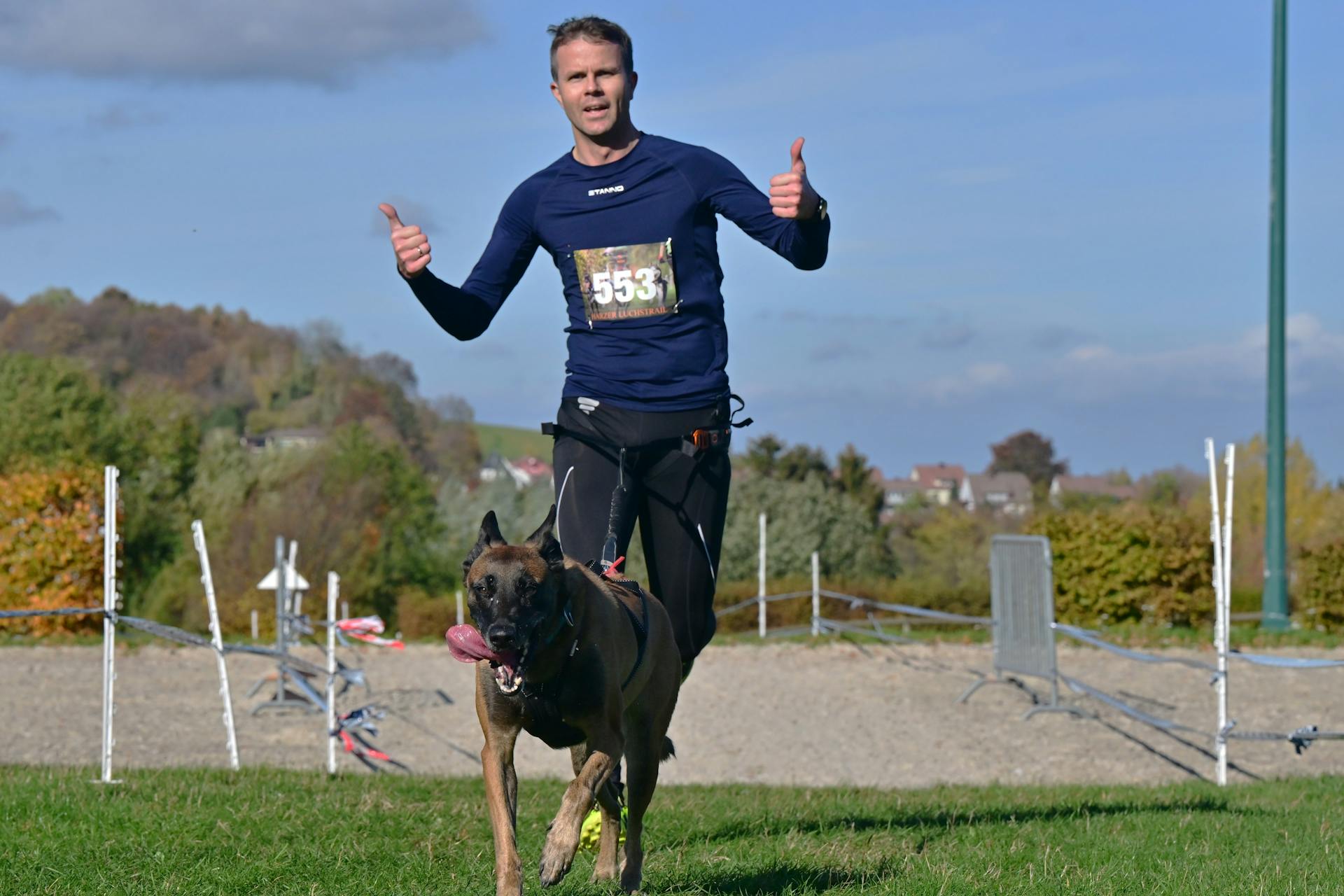
Resource guarding is an instinctive behavior in dogs, and occurs when a dog views a certain item as valuable and wants to protect it from other animals or people. This can manifest in aggression toward humans or other animals, so it’s important to learn how to recognize and address the issue promptly for the safety of all involved.
1. Understand why your dog is resource guarding: Before you can take any steps towards solving your dog's resource guarding problem, it's important that you understand why he feels the need to guard certain resources -- such as food, toys, or even people -- from others. Some possible triggers include anxiety stemming from lack of trust or feeling threatened by an unfamiliar person or animal. If these triggers can be identified while they remain relatively low-level occurrences (growling when someone comes close rather than jumping up and biting), then a long-term solution is much more likely.
2. Make all resources available: To prevent the development of protective behaviors in the first place, make sure that your pup has access to plenty of resources such as food bowls filled with kibble at regular intervals throughout the day; varied toys; free access to outdoor areas where they can explore safely on their own terms; play time with family members who understand their needs; etcetera. Generally speaking if there are enough available resources then competition won't develop between individuals seeking exclusive control over them!
3 Invest in positive reinforcement techniques: Trainers suggest rewarding good behavior instead of punishing bad behavior — not only does this help build trust between owner-and-dog but also reinforces desirable behaviors so that undesirable behaviors like resource guarding become less attractive options for your pup. Positive reinforcement techniques may involve providing treats for sharing items politely with others, offering gentle petting during tailored play sessions, praising calm interactions during particular scenarios (such as around strangers), etcetera. It's beneficial here too if family members show consistency with regards to expectations, rewards & timing!
4 Set boundaries: Resource guarding must be taken seriously — although smaller dogs tend less towards aggressive actions such as biting this doesn't necessarily mean it isn't something you should be addressing & taking measures against progressing further (which would increase overall risk factors considerably). Start by teaching ‘leave’ commands - both verbal & physical cues - which should demonstrated whenever someone approaches possessions deemed especially valuable by your pet ; formulating firm rules is always useful too e.g.'No one else touches my toy ' /' I share my food bowl ’ etcetera. Training sessions are best conducted one-on-one without distractions at regular intervals until an acceptable understanding has been reached by everyone involved / concerned parties!
For your interest: Good Dog Food for Hunting Dogs
What causes resource guarding in dogs?
Resource guarding in dogs is often a difficult behavior to manage. Resource guarding can include growling, snapping, or even biting when a dog feels its possessions are threatened, including food bowls and toys. But what causes resource guarding in dogs?
Resource guarding comes from instinctual behaviors that have been shaped over the course of domestication of wild packs into today’s modern pet dog. Canines are descended from wolves that needed to guard their resources in order to survive---an individual wolf working alone didn't stand much of chance against competing predators. It's understandable then why resource guarding should emerge as an instinct for our furry friends: protecting valuable resources such as food and territory was key for survival!
Another possible root cause of resource-guarding behavior might be rooted in contributing factors like learned behaviors and Poor Socialization. For instance, if a pup receives negative feedback when trying to protect something precious (such as scolding or physical punishment), they may easily adopt a defensive posture towards anyone they feel could take it away—whether real threat exists or not! Additionally, if a pup has had limited exposure to different people, places, sounds and stimuli during their critical socialization period (between 7-16 weeks old), this could heavily influence their ability perceive strangers positively—discomforting them when threats near what they feel is worthy protecting.
Overall it's important to understand how certain environmental influencers shape canine (and human) behavior while managing difficult cases like resource guarding; by doing so we can help avoid common mistakes that can do more harm than good!
Recommended read: Dog Food for Dogs with Colitis
What are the most effective strategies to prevent resource guarding in dogs?
Resource guarding is a behavioral issue where a dog has developed an unbalanced sense of ownership over something and will guard it out of fear that it will be taken away. Though most commonly seen over food-oriented resources such as treats, toys, or bones, resource guarding can expand to other areas such as beds, crates and even people. To prevent this behavior from occurring in the first place there are several effective strategies owners should consider when introducing their pet to possessive items.
First and foremost it’s essential for owners to provide enough mental stimulation for their dogs so that they’re not inclined to become overly possessive or territorial. Regular walks and games help keep your pup’s mind engaged so they won’t feel like they need to guard their resources out of necessity but rather are willing to share them without feeling threatened. Keeping firm expectations consistent during the introduction process is also key; by teaching through constructive reinforcement the dog will understand that no matter what items come into play he is expected to act politely with others around him even if his thing may be at stake.
Secondly, it’s important for individuals interacting with the pup not too appear threatening or aggressive when engaging in activities around his item of choice; move slowly when hand-feeding treats and maintain a calm energy throughout introductions in order for your pup not feel like any impending physical danger may occur due to someone approaching his prized possession. Additionally having two different sets of snacks on hand can lighten up some interactions; instead of only having one grand prize item you could offer two smaller options which helps the dog understand he doesn't have just one monopoly on all available goodies because there are alternative choices relative nearby which takes much unnecessary pressure off both parties involved regarding interactions among prized possessions!
Ultimately if owners take these precautions against resource guarding seriously then chances are this behavior will never rear its worrisome head! With proper etiquette on your part you too can enjoy introducing your furry friends into appropriate situations without foolish complications spilling out due resource guarding potential happening instead focus mostly on managing expectations while keeping plenty mental stimulation top priority - before long both you and pup'll reap satisfying results!
A fresh viewpoint: Dog Training Resources
How can I identify signs of resource guarding in my dog?
Resource guarding is a common behavior in many dogs, and understanding how to identify it can help us give our pets the best home possible. Resource guarding occurs when a dog feels that a certain valued object or resource – such as food, toys, treats, or even human attention – should be under their control and will become defensive of it. Here are some signs you can look out for if you believe your pup may be displaying resource guarding behavior:
• Growling, snapping or barking when someone attempts to take away the item they have staked stake their claim on.
• Keeping other family members at a distance when eating meals or chews.
• Aggressive behaviour towards another dog in reference to treats or toys by blocking off access.
• Refusing to allow humans near them when they’re engaged with something (like chewing on something especially delicious) that others also desire.
• Becoming visibly agitated – through body language like stiffening up and raising hackles - when approached near their ‘valuable’ item by another pet or person.
If your pup is exhibiting these signs of resource guarding behavior it’s important not resort immediately to shouting at them as punishment - this will likely only increase their defensive aggression responses going forward and worsen an already delicate situation. Instead try putting yourself between the dog and whatever they're trying to protect while talking calmly and softly; this should provide them with emotional support while subtly showing that it's alright for you approach any items under contention without consequence. Additionally offering accurate reinforcement (such as providing affectionate words and pats) after successively successful training sessions can help build better relationships between family members and reduce the need for future guarding behaviors!
Explore further: Vet Dogs Dog Treats
How can I teach my dog to share resources without exhibiting guarding behavior?
Teaching your dog to share resources without exhibiting guarding behavior can be achieved by establishing yourself as a strong leader and developing a trusting relationship between you and your dog. Additionally, it's important to practice methods that create positive reinforcement rather than negative reinforcement, as this will encourage desired behaviors.
First, it's crucial to understand when resource guarding is occurring in order provide the proper corrective action. Signs of aggression include growling or snarling while showing teeth, lip curling and even movement toward another animal or person attempting to take away the object being guarded.
Once you recognize resource guarding in your dog you should immediately respond with training strategies that promote intrinsic reward for desirable behavior like sharing with others rather than punishment for undesirable behavior such as aggression toward people or animals who approach them when they have something valuable. Using treats and verbal praise for example—which can help reinforce positive behavior—can be used during morning walks towards other dogs on the route to make sure everyone understands boundaries and safety guidelines conforming to good canine etiquette. This teaches your pup good manners while still rewarding them for exhibiting good temperaments around other dogs when receiving attention from outsiders or sharing their beloved toys without getting aggressive or territorial.
In addition, make sure not give too much value on items these items so they don’t become obsessed over them; meaning don’t give toys special treatment such as allowing only certain people play with the toy or making it forbidden territory at all times--no matter if they are present or not nearby those things they clearly cherish so much; this communicates trustworthiness and lack of insecurity regarding those valuable objects which builds loyalty over time given recent research by veterinary care professionals would suggest that most instances of resource-guarding result from feelings of possessiveness derived from highly valued objects making humans an entity worthy enough around their possessions where no fear nor intimidation is needed! (At least we hope)
By understanding this concept you'll have an easier time teaching your pup how share resources without resorting aggressive tactics—which ultimately helps build a healthy relationship between both humans/dogs because safety comes first!
Check this out: Why Does My Dog Snap at Other Dogs
What can I do if my dog becomes aggressive while guarding resources?
If your dog is exhibiting signs of aggression while guarding resources, it's important to take steps to address the problem right away. Aggression can become dangerous and even scary for everyone involved if not nipped in the bud. The good news is, with patience, consistency and a lot of work you can help your pup develop positive behaviors when it comes to protecting their resources.
First off, it’s important to identify why your dog is displaying possessive and aggressive behavior. Common reasons include lack of socialization or feeling threatened by certain people or other animals coming into proximity with their valued items such as toys, food or even their beds. While it's difficult to pinpoint the root cause of this type of behavior, there are still plenty of things you can do as an owner in order to modify and improve them over time.
The primary goal should be teaching your pup how to tolerate sharing his possessions and being around people or other animals without reacting aggressively every time these triggers occur. Positive reinforcement techniques such as clicker training can be utilized here; anytime your dog successfully stays calm in a situation that would typically spark an hostile reaction from him/her – reward them with a treat! This will reinforce the desired behavior so that gradually they build up trust around others joining their space without snapping at them out of fear or discomfort. Additionally keep in mind that these modifications will require consistent effort on your part; make sure each new experience involving another person/animal takes place under structured environment conditions so that all involved remain safe throughout the learning process until more confident behaviors are developed over time; this way negative associations do not form due to too much stress factor being added at once when revisiting similar scenarios later down line - always progress slowly!
Dealing with canine aggression related issues may take some time but providing careful direction towards changing inappropriate responses while showing kindness towards our four legged friends; makes for highly effective results overtime so hang tight & stay patient!
A different take: Dog to Dog Aggression
Is resource guarding common in all dog breeds?
Resource guarding is a behavior in which a dog perceives something of value, such as food or toys, and becomes defensive over it. While it’s more common in certain breeds than others, resource guarding can occur across all breeds.
Some dogs may be more prone to resource guarding due to breed-specific traits. Certain types of guard dogs are bred to have naturally protective qualities and thus may come with an inclination towards being more territorial or possessive. Breeds like German Shepherds and Rottweilers might display these behaviors because of their history as watchdogs. Additionally, some smaller breeds like Chihuahuas might also show similar tendencies because of their small size which could lead them to feel threatened by larger animals around them for example.
However, any type of dog can display resource guarding behaviors under the right circumstances—it depends on the individual dog’s personality and experiences they have been exposed to during their upbringing as well as throughout their life. If appropriate socialization takes place during its puppyhood and it is trained properly by its owner(s), then that particular dog will be less likely to display these types of behaviors than if it was neglected from socialization or lacked proper training or discipline when needed. Furthermore, introducing new people into its environment should always be done gradually so that the pup has an opportunity to acclimate itself before becoming overwhelmed with an abundance of unfamiliar faces at once; otherwise this could trigger anxiousness within the pet due to fear-based aggression scenarios being triggered if said situation arises too quickly for comfort levels.
Even though resource guarding behavior is not necessarily common among all breeds –it does still exist nevertheless– understanding how to handle this issue correctly via patience while making use educational methods that are tailored towards each individual pup’s needs are key factors helping prevent any potential problems arising down the line!
Discover more: Rare Guard Dog Breeds
Sources
- https://www.preventivevet.com/dogs/puppy-nipping-and-biting
- https://www.k9ofmine.com/dog-that-bites-owner/
- https://www.livejournal.com/create
- https://www.telegraph.co.uk/news/
- https://www.whole-dog-journal.com/behavior/understanding-dog-appeasement-signals/
- https://www.hbo.com/the-wire
- https://pethelpful.com/dogs/How-Do-I-Get-My-Older-Dog-to-Stop-Attacking-My-New-Puppy
- https://www.gutenberg.org/files/2600/2600-h/2600-h.htm
- https://www.expatica.com/de/jobs/
- https://www.k9ofmine.com/when-should-aggressive-dog-be-euthanized/
Featured Images: pexels.com


